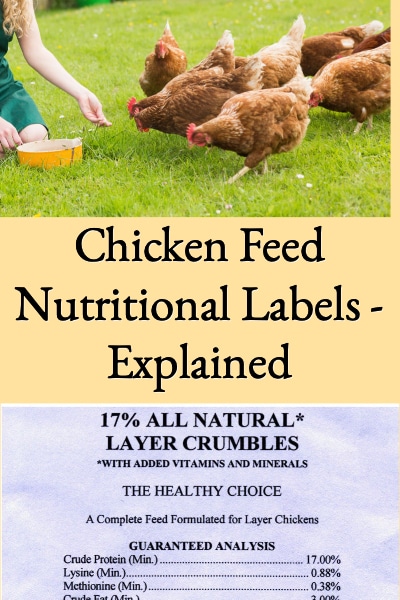
They do this by segregating chicken feeds into those that are appropriate for meat or dual-purpose and egg-laying breeds (broiler or layer rations). Then they further categorize them into nutritionally complete feeds for day-old chicks, growing chicks, or adult birds (starter, grower, or layer rations).
But within those categories, manufacturers provide even more choices, and they can be confusing. Feeds can be pellets, crumbles, medicated, natural, non-GMO, organic, include vitamin additives, and more.
Fortunately, every bag of chicken feed sold in the U.S. is required to have a tag specifying the ingredients. By reading the label, we can easily control what our poultry eat, and produce outstanding meat or eggs. Most manufacturers also place their nutrition labels online (you can find examples HERE).
CHICKEN FEED NUTRITIONAL LABELS ANATOMY
Chicken feed labels (see the example label in Figure 1 below) are required to identify the product name, purpose (type and age of chicken the feed is for), guaranteed analysis of essential nutrients, ingredients, feeding directions, cautions, manufacturer, and net weight.
The guaranteed analysis must specify the minimum level of crude protein, lysine, methionine, fat and phosphorous. Also, the maximum level for crude fiber and a min./max. guarantee for calcium and salt must be specified.
Finally, the label will identify the feed form and if it’s medicated, natural, non-GMO, organic, or has other beneficial additives. Growth hormones were banned from U.S. chicken feeds in the late 1950s, so they should not be a concern.
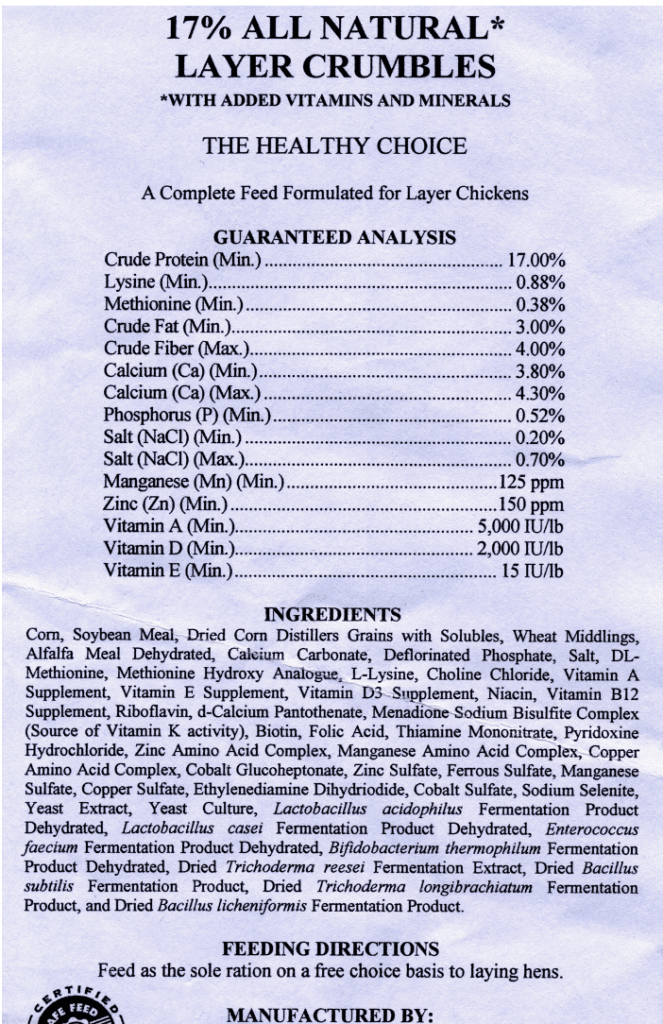
Figure 1 – 17% All Natural Layer Crumble Chicken Feed Nutrition Label
BASIC POULTRY FEED
When choosing a chicken feed, it’s most important to pick one that is the appropriate category for the type and age of bird being fed. For example, choosing layer rations for adult egg-layer (like the feed shown in Figure 1) or starter rations for young turkeys or broilers (like the feed shown in Figure 2). Within each category, a manufacturer’s basic feed should supply adequate nutrition, but the choice of brand and formulation is a personal decision.
Basic rations will be less costly but may contain animal by-products, GMO ingredients, and protein or nutrient levels that are less desirable than ingredients in higher-priced formulations.
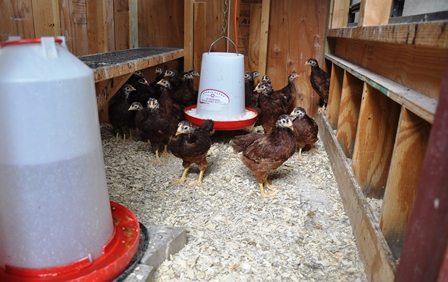
Feeding Baby Buckeye Chickens
PELLETS OR CRUMBLES
Each producer’s ration is generally available in either crumble or pellet form. They are usually nutritionally identical within each brand. Therefore, it’s a choice of which is easier and less wasteful to feed.
Crumbles are easy for chickens to eat so they are often used to feed young birds (like the crumble shown for turkeys in Figure 2). But chickens tend to waste crumbles, so pellets are often preferred for adult birds (like the pellet shown in Figure 1).
MEDICATED FEEDS
Feeds for growing poultry are typically offered in either medicated or non-medicated formulations. Medicated feeds (like the example shown in Figure 2) are used to help prevent losses due to the disease coccidiosis. They contain a coccidiostat (often amprolium) and may contain an antibiotic. Medicated rations can be fed to chicks for egg-laying up to 16 weeks of age and meat birds up to five days before slaughter.
NATURAL POULTRY FEEDS
Each manufacturer may interpret what makes a feed “natural” differently. Therefore, it’s particularly important to read these labels to determine whether the ingredients are acceptable. Generally, “natural” means that the ration does not contain a coccidiostat, antibiotics, animal proteins, or animal fats. Some producers offer feeds that do not contain soy products.
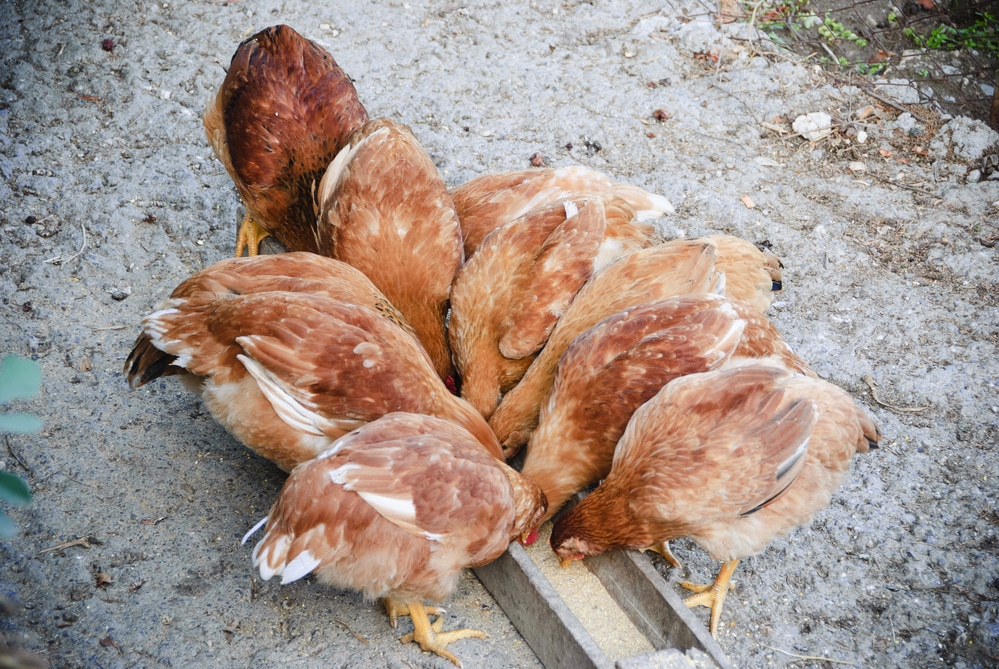
Chickens Eating Crumbles
NON-GMO
GMO seeds are genetically modified by direct gene insertion. GMO crops approved for animal feed in the U.S. include corn, soybeans, canola, alfalfa, cotton, and sugar beets. Non-GMO ingredients may not be modified in this way but maybe be grown and processed with chemical products. If the label does not specify non-GMO, then it’s likely that approved crops in the feed are GMO.
ORGANIC
Organic ingredients must be grown and processed in accordance with the National Organic Program. They may not be grown from GMO seeds or be treated with chemical fertilizers, fungicides, or pesticides. Organic rations cannot contain chemical preservatives, medications, or animal by-products.
VITAMIN, MINERAL & OMEGA-3 ENHANCED
Chickens require small quantities of the vitamins A, B, C, D, E, and K, so feeds may contain some or all of these. Flax, minerals or other additives may be included in higher-end rations to increase the levels of omega-3 or other beneficial ingredients present in the eggs or meat produced.
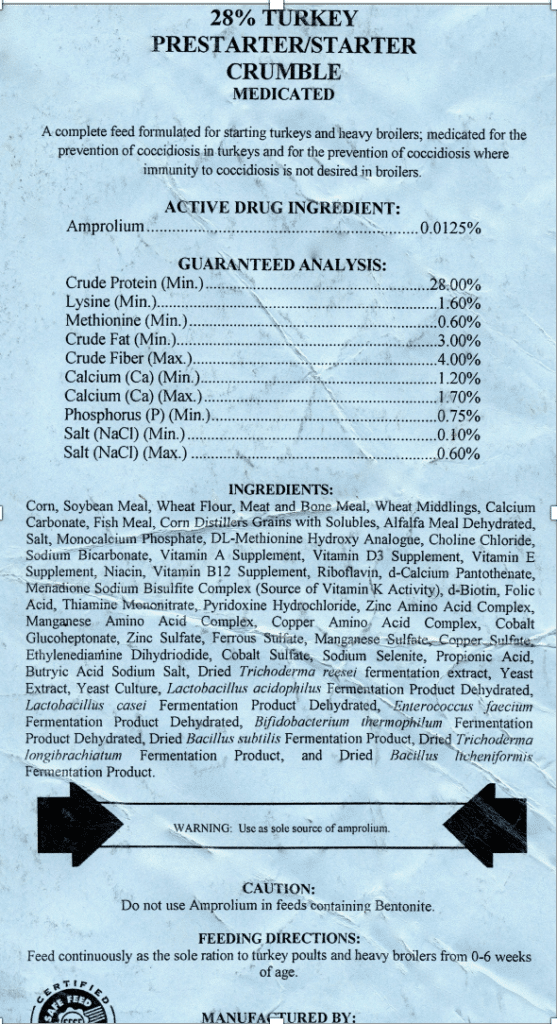
Figure 2 – 28% Turkey Starter Crumble Chicken Feed Nutrition Label
Today, there are many brands and formulations of commercially available chicken feed. They all carry a chicken feed nutritional label specifying the ingredients and percentage of required nutrients. By understanding these labels, we can customize feeding to achieve our goals for the meat and eggs our birds produce.
Leave a Reply